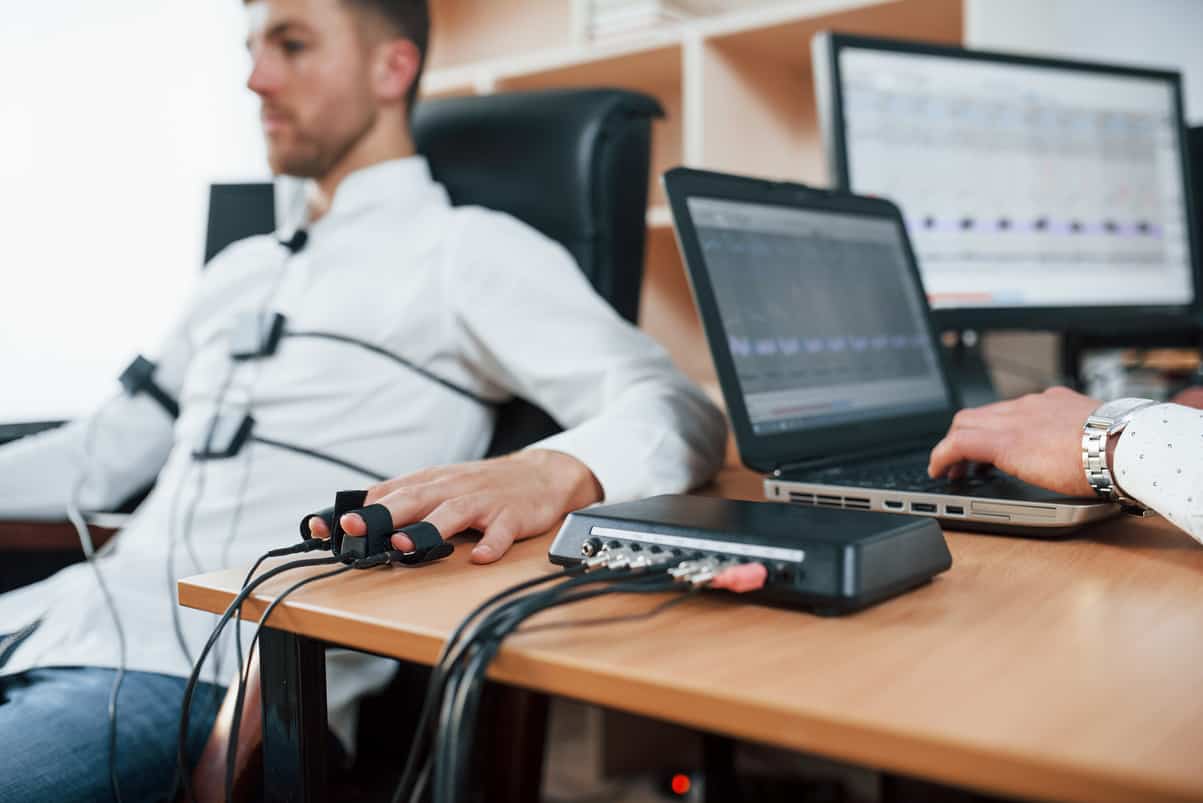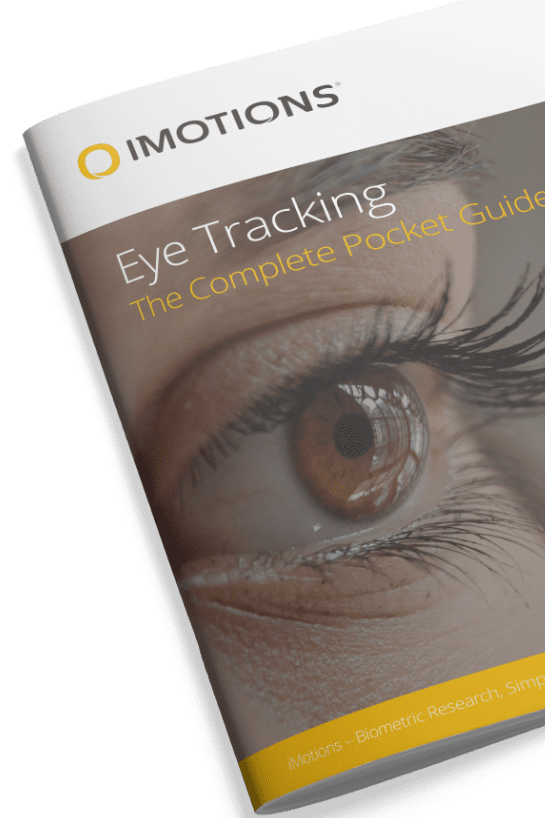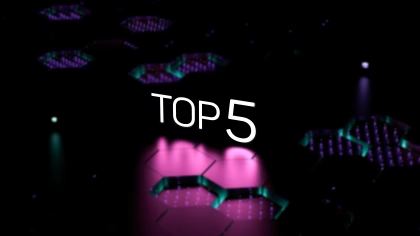Many peoples’ first exposure to the idea of biosensors has been in popular portrayals of lie detection and polygraph tests in media. As a result, we at iMotions are commonly asked about whether biosensors are used in lie detector or polygraph tests. Currently, polygraph tests, based on heart rate, respiratory rate, and galvanic skin responses, are most commonly used to discern when people are concealing knowledge (Honts 2021). Interviews are also commonly used to determine when someone is hiding something.

Eye tracking, however, can be a surprisingly powerful tool when detecting deception. Across many cultures, the eyes have been described as the “window to the soul” – through which we often reveal and gather information about one’s intentions, thoughts, and emotions. When approached by another person, for example, we naturally look to their eyes to see where they are looking, interpret how they are feeling, and determine whether we need to react. In such instances, we instinctively discern their intentions and prepare an appropriate response. As effective as this may be, we remain limited in what we can glean about the internal states of others, but eye tracking technology can augment the observation and interpretation of information revealed through the eyes, which can aid our understanding of what others are thinking.
A simple model for studying deception is by showing participants photos of faces, some of which are familiar and some of which are not. In this scenario, participants are asked to freely view the faces but conceal their recognition of the faces they find familiar. Even when people attempt to conceal recognition of a particular face, the use of eye tracking gives them away – familiar faces often evoke longer durations of fixations from participants. Furthermore, when a familiar face is seen among unfamiliar faces, a characteristic fixation pattern occurs around 500 ms after faces are presented. These fixation-based effects could easily be missed by a human observer and can only be measured and recorded with eye tracking.

But surely, the sneakiest of us could train ourselves to simply not look at the familiar faces, right?
Not so fast – subsequent studies by Millen (2019, 2020) tried to do just that, training an additional group of participants to alter the eye movements on familiar faces to resemble the eye movements they’d make on unfamiliar faces. Even when participants were trained to be even more deceptive, average fixation durations were still significantly longer on familiar faces, regardless of instructions (Millen 2019, 2020). When an array of faces is seen where some faces are familiar and others are not, these prolonged fixations still occur for familiar faces and not for unfamiliar ones, particularly when the faces are first seen (Schwedes 2017, Lancry-Dayan 2018, Mahoney 2018). Increases to average fixation duration on familiar faces remain significant regardless of these instructions or training. This could serve to identify when someone is concealing recognition and when they genuinely do not recognize a person or item.
Other eye tracking methods have also been developed to determine when people are concealing information in response to interview questions. These methods are largely based on increases to pupil dilation and blink rate as well as decreases to the number of fixations when concealing information during interviews (Walczyk 2012, Peth 2013, Lim 2013). These responses further reveal increases to physiological stress and cognitive load when lying, which underlie existing polygraph methods.
Eye tracking could easily be used independently or in parallel with current methods for interpreting what a person is thinking, especially for determining if a person recognizes a person or item. The observation of increased fixation durations, in particular, could help identify when a person does or does not recognize someone or something – using quantifiable behavioral measures. This could provide critical information whenever there is a need to determine what someone knows and whether they are attempting to conceal it. However, the use of a multimodal approach that includes eye tracking, skin conductance, blink rate, respiration, and many others can provide a powerful set of tools for those interested in the study of deception.
Eye Tracking
The Complete Pocket Guide
- 32 pages of comprehensive eye tracking material
- Valuable eye tracking research insights (with examples)
- Learn how to take your research to the next level

References
Matsuda, I., Ogawa, T., & Tsuneoka, M. (2019). Broadening the use of the concealed information test in the field. Frontiers in psychiatry, 10, 24. Review
Honts, C. R., Thurber, S., & Handler, M. (2021). A comprehensive meta-analysis of the comparison question polygraph test. Applied Cognitive Psychology, 35(2), 411-427.
Millen, A. E., & Hancock, P. J. (2019). Eye see through you! Eye tracking unmasks concealed face recognition despite countermeasures. Cognitive research: principles and implications, 4(1), 1-14.
Millen, A. E., Hope, L., & Hillstrom, A. P. (2020). Eye spy a liar: assessing the utility of eye fixations and confidence judgments for detecting concealed recognition of faces, scenes and objects. Cognitive research: principles and implications, 5(1), 1-18.
Rosenzweig, G., & Bonneh, Y. S. (2020). Concealed information revealed by involuntary eye movements on the fringe of awareness in a mock terror experiment. Scientific reports, 10(1), 1-15.
Mahoney, E. J., Kapur, N., Osmon, D. C., & Hannula, D. E. (2018). Eye tracking as a tool for the detection of simulated memory impairment. Journal of Applied Research in Memory and Cognition, 7(3), 441-453.
Lancry-Dayan, O. C., Nahari, T., Ben-Shakhar, G., & Pertzov, Y. (2018). Do you know him? Gaze dynamics toward familiar faces on a concealed information test. Journal of Applied Research in Memory and Cognition, 7(2), 291-302.
Gamer & Pertzov 2018 from Rosenfeld, J. P. (Ed.). (2018). Detecting concealed information and deception: Recent developments. Review
Walczyk, J. J., Griffith, D. A., Yates, R., Visconte, S. R., Simoneaux, B., & Harris, L. L. (2012). Lie detection by inducing cognitive load: Eye movements and other cues to the false answers of “witnesses” to crimes. Criminal Justice and Behavior, 39(7), 887-909.
Peth, J., Kim, J. S., & Gamer, M. (2013). Fixations and eye-blinks allow for detecting concealed crime related memories. International Journal of Psychophysiology, 88(1), 96-103.
Lim, K. K., Friedrich, M., Radun, J., & Jokinen, K. (2013, December). Lying through the eyes: detecting lies through eye movements. In Proceedings of the 6th workshop on Eye gaze in intelligent human machine interaction: gaze in multimodal interaction (pp. 51-56).










